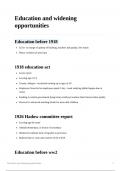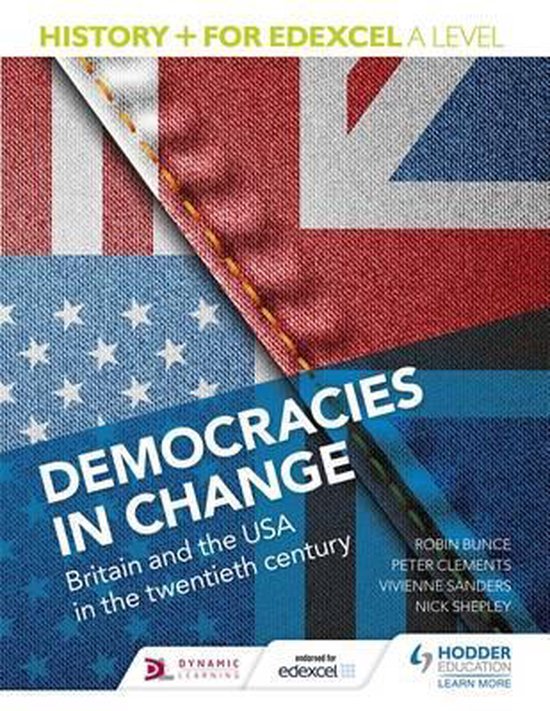Education and widening
opportunities
Education before 1918
LEAs- in charge of upkeep of building, teachers and quality, free meals
Hence variation of provision
1918 education act
Lewis report
Leaving age of 14
County colleges= vocational training up to ages of 18
Employers forced to let employees spend 1 day / week studying (didnt happen due to
costs)
Funding to central government (long term) could pay teachers better hence better quality
Practical vs advanced teaching divide for more able children
1926 Hadow committee report
Leaving age the same
Abolish elementary, in favour of secondary
Wanted to eradicate lack of equality in provision
Rejected due to costs and controls of the LEAS
Education before ww2
Education and widening opportunities 1
, Point Fact Stat Impact
LEAS 328 of them
Elementary 50-60 children Rote learning Free education
1931- only
600,000 attended-
Limited unfair
Secondary 16 leaving age, middle classes only 20% of the
provision
country in
secondary
Grant funded, scholarships to Received an excellent
bright kids- who still struggled to education- scholarship
Grammar schools Entrance exams
maintain by parents who had to pay allows a degree of
for transport and uniform widespread impact
Elementary school attendees 1931- 5.5m (majority)
University students 1931- 30,000 (narrow)
Ww2 only 13% of those older than 13 in education
1939-44 changes in education
Inequality, variations in provision and quality
Enforced the class system
Poor people unable to access
Stuck in cycles of poverty
Impacts
Idea Fact Stat Impact
Ignorance, the war effort
Beveridge report needed educated troops Many branches had to be
Need intelligent civilian
1942: World War for technological taught basic literary and
workforce
Two complexity of modern numeracy
warfare
Education and widening opportunities 2





